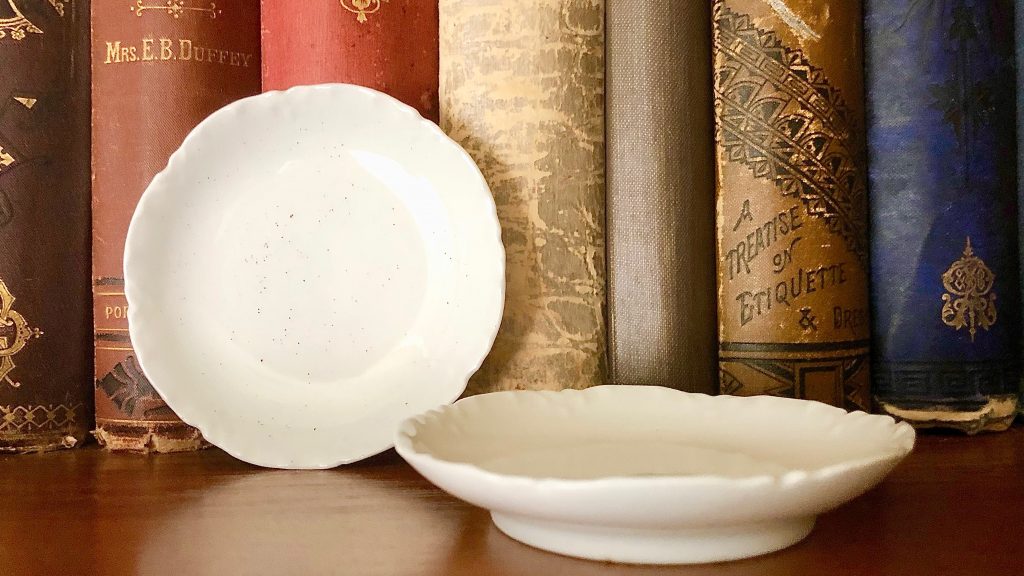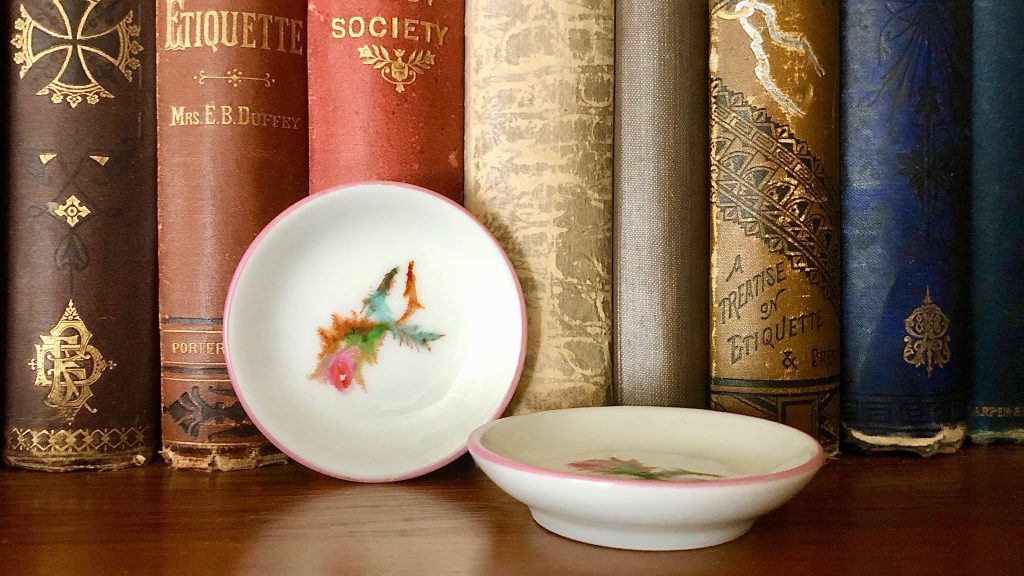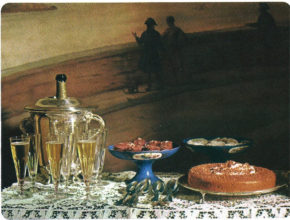File under things we never see any more; tiny little plates, usually about 3 inches in Diameter set in the upper left corner of the place setting.

Prior to the 1800’s with the exception of Royal tables, butter was likely served from a communal dish, either in small scoops or in a great mound. This soon gave way to butter served in lidded dishes. These usually contained a hidden area for ice, to keep the butter from melting. Guests at the Regency table were used to people reaching for dishes and serving themselves, even more so in the Federalist USA, but eventually that gave way to Victorian order, who moved away from the lump of communal butter, except for family breakfasts and informal meals.
By the mid 1800’s, butter was cut into squares, curled into little rolls, or if you were really fancy, molded into small shapes. Beginning in the 1850’s butter pats begin being made in glass, porcelain or silver. China manufacturers immediately began making them to match their sets. These appeared during Victorian times and for good reason. As Russian service came into favor and courses grew more numerous, one was faced with a place-setting comprised of silverware for a ten-course meal – a plate, napkin, menu, place card, multiple glasses, salt cellar, pepper shaker and possibly a mustard pot. Suddenly, it would be a dangerous business to lean forward to take a little butter to put on your plate from a communal butter dish. Gone were the days where people reached for items willy nilly, you’d likely break something expensive. Nor would a Victorian host ever think of having his guests pass round the butter. So, butter pats appear. They were now able to butter their rolls without fear.

By the 1920’s butter pats only appeared in high end china sets and by 1950 they stopped being made altogether for the home market.
Hotels, restaurants and diners continued to serve butter on dishes. So much so that the square slice of butter became de rigueur in eating establishments. Hotels would have butter pre-sliced into squares with their logo pressed into them. There are some fancy restaurants and hotels that continued the practice into the eighties. Soon, both the square slice of butter and the little dish it’s served on became known as butter pats.
You may notice butter pats mislabeled as salt cellars; salt cellars will have sides high enough to protect tables from spilling salt. Sometimes you will see salt dips mislabeled as butter pats, salt dips were oval in shape and butter pats were circular or square, but never oval.

There are also small plates that look like butter pats that are actually tiny plates from a child’s tea set, these will usually be smaller than a butter pat. Sometimes manufacturers used the same mold to save money, some children’s set can even rival the butter pats made for adults in quality, so you’re forgiven if you make this mistake.
I personally love a butter pat. Now, if we could just get people to go back to eating bread and butter. Mmmmm, that sounds good. I’m off to make some toast with butter. Much love, Cheri


